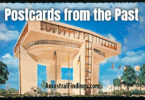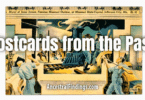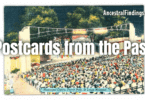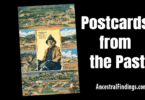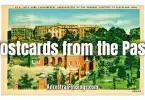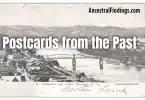When I First Noticed This One
Some postcards you flip past quickly. Others make you stop. This one made me stop. It’s not flashy—there’s no massive landmark or postcard-perfect sunset. Just a simple church nestled among a few trees, with a neat little gatehouse and a quiet street. What caught my eye was the caption: The Little Church Around the Corner. That name alone makes you want to find out more. It sounds like something you’d say if you were giving directions in a familiar neighborhood—only this neighborhood happens to be in the middle of New York City.
A Church That Welcomed Outsiders
The official name of the place is the Church of the Transfiguration, but most people never call it that. It picked up the nickname in 1870 when an actor named George Holland passed away. His friend, fellow actor Joseph Jefferson, tried to arrange a funeral. One nearby church refused, saying they wouldn’t perform services for actors, who weren’t always respected at the time. The priest told him, “There’s a little church around the corner that does that sort of thing.”
It wasn’t meant kindly, but Jefferson went. And the Church of the Transfiguration didn’t hesitate—they welcomed Holland, and soon after, they welcomed just about anyone else who came through their door. That moment stuck. The nickname stuck too. It’s been “The Little Church Around the Corner” ever since.
Right in the Middle of Manhattan
The church sits on East 29th Street between Fifth Avenue and Madison. You wouldn’t expect a place like this to exist in Manhattan. It looks like something pulled out of the English countryside—ivy-covered walls, Gothic-style windows, and a garden that actually feels quiet. I’ve been to New York a few times, and even a short walk can feel like a full-blown sprint with the noise and the traffic. But here’s this little spot that doesn’t seem to care about all that.
It was built in the 1840s, back when the city was growing fast, but still hadn’t yet exploded upward into the skyline we know now. The church has been there through it all—before subways, before skyscrapers, and before the area was packed with office buildings.
Actors, Artists, and Everyday Folks
After welcoming George Holland’s funeral, the church became a favorite of the theater world. Over the years, actors got married here, memorials were held, and the Episcopal Actors’ Guild was even founded at this church in 1923. It’s become something of a tradition for performers to find their way here. There’s a garden on the property that honors the theatrical community, including a memorial to Edwin Booth—one of the great Shakespearean actors of the 19th century and brother to John Wilkes Booth.
But it’s not just a church for celebrities. Thousands of couples have been married here over the years, and many just walked in off the street. It’s small and simple, which makes it all the more inviting. Especially for people who came to the city to start something new.
Then and Now
This postcard probably dates to the early 1900s. You can see how neat everything looks—clean sidewalk, clipped hedges, and not a car in sight. It almost feels like the city hasn’t arrived yet, even though you know it has. The homes and buildings nearby still have that older character—brick, modest, lived-in. There’s something peaceful about the view. The kind of peace that’s hard to find today in Midtown Manhattan.
If you visit the spot now, the church is still there, and it looks much the same. But the surroundings have changed. High-rise buildings tower nearby. Traffic moves nonstop. The garden is still maintained, and the church still welcomes guests, but it’s tucked in more tightly than ever. It hasn’t been swallowed by the city—but it’s definitely holding its ground.
Why This Postcard Matters
There’s no message on the back of the card, just a printed note mentioning how popular the church was for weddings. That tells me it was likely used as a souvenir—something someone picked up while visiting or getting married there. The photo says more than the description does. You can tell it’s a place that’s meant something to people.
And that’s the thing about old postcards. They give you a quick look—not just at buildings or streets, but at places where real moments happened. Weddings, goodbyes, Sunday mornings, small joys. That’s the kind of history I like—everyday history you can hold in your hand.
Let’s Keep Sharing These Stories
If this postcard reminds you of a quiet spot in your town—or a place that’s changed a lot over time—I’d like to hear about it. And if you’ve got a postcard of your own that tells a story, send me a note. Just head to the Contact page and ask for my mailing address. I’d be glad to add yours to the collection, and who knows—maybe we’ll end up talking about it here one day.

